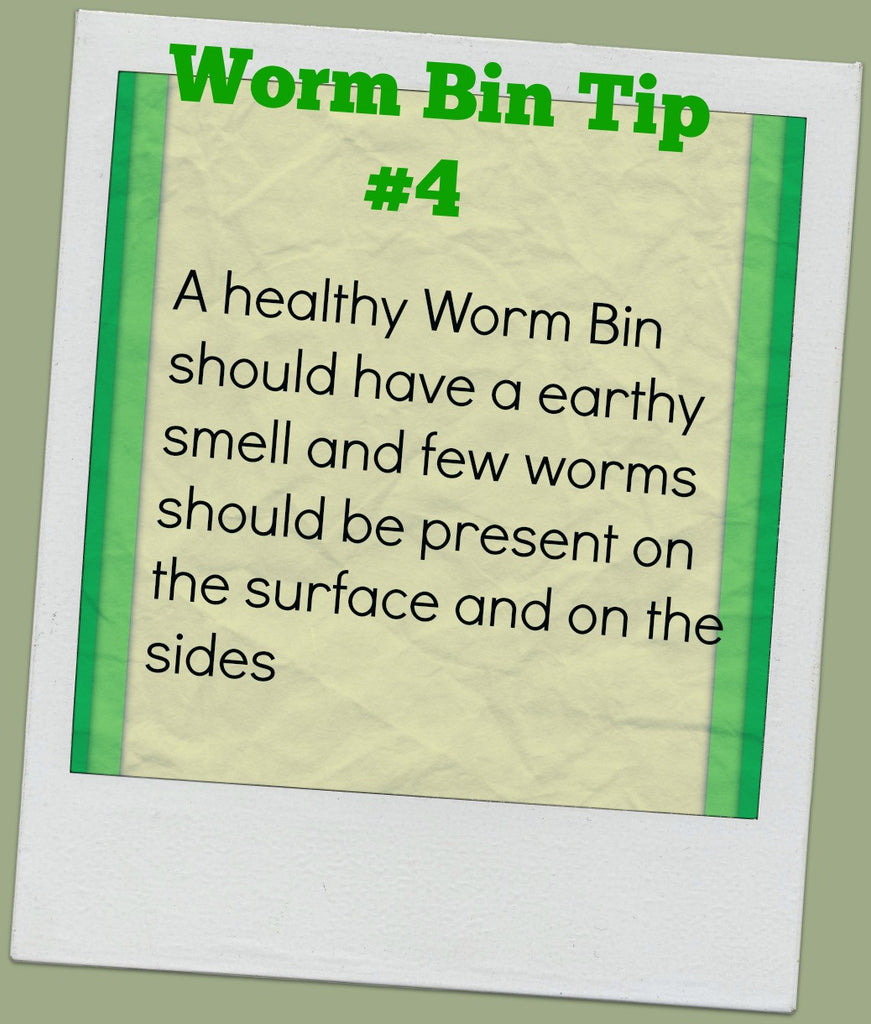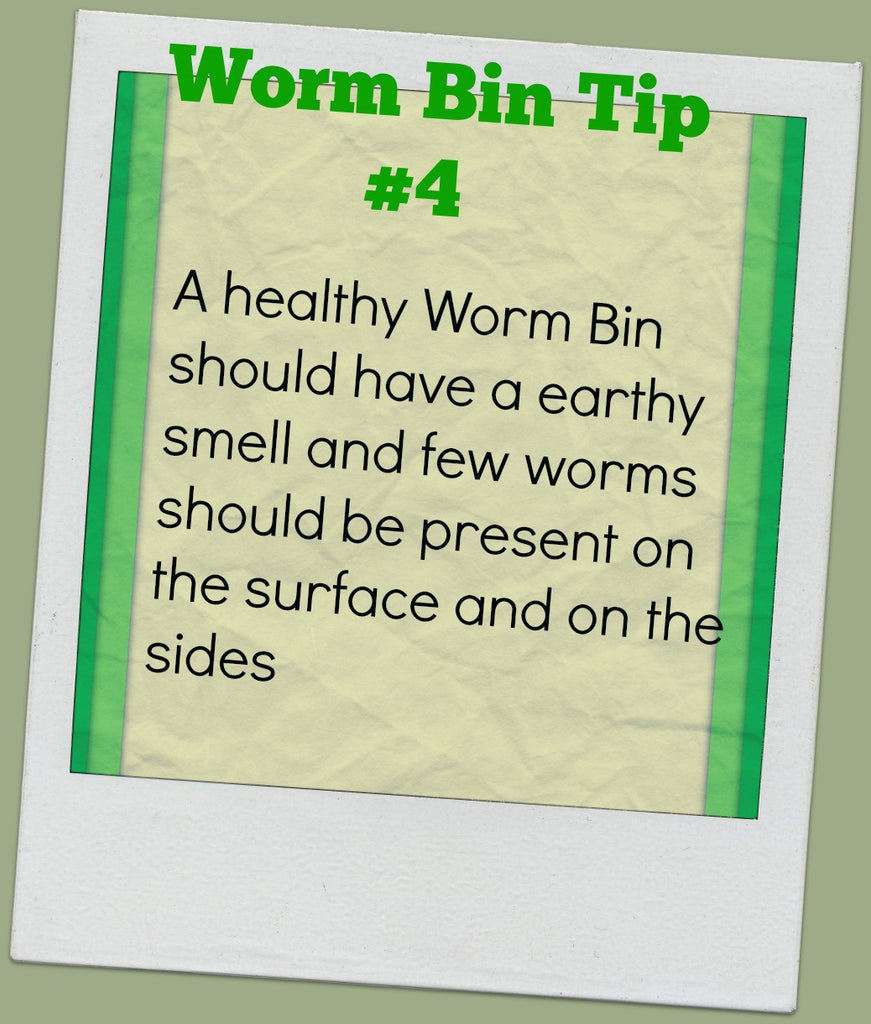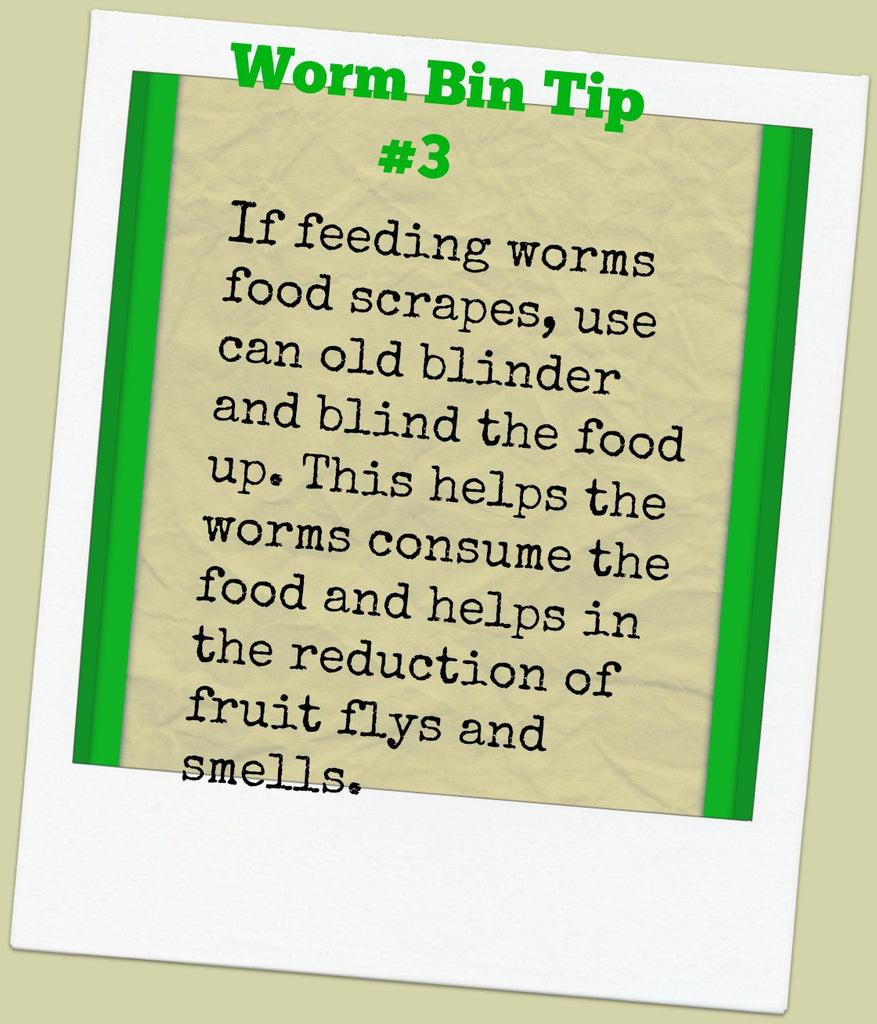News
How to Maintain Moisture Levels in Worm Bin
It is best to water your composting worm bins in frequent light applications using a misting or spraying system instead of heavy infrequent or pouring water in your worm bin. The first 5 inches where most earthworm activity will be greatest should have the highest concentration of moisture. Under the main moisture area will be your worm castings. You don't want soggy anaerobic worm casting which smell foal but worm casting that smell earthy.
How Many Composting Worms Needed to Start a Worm Bin!
How many worms needed to start a worm composting bin can be answered with two questions:
-How much worm food/kitchen waste do you have access too?
-What size is your worm bin?
How Much Worm Food Do I Need
You can either estimate your weekly usage or you can weigh your food waste daily for a week and average out your daily food waste.
Unsure as to what food waste you can feed your worms. Check out this blog post: What You Can and Cant Feed Your Composting Worms
Compost worms eat roughly 25-35 percent of their weight per day. This is the consensus among academia research available however some places on the internet state a much higher amount up to 100% of their body weight. Using the information above, 1lb of composting worms will roughly eat 1.75 to 2.45 pounds of food per week.
What Size is My Bin?
The healthy number of composting worms is 1 pounds per square feet of bin surface area (1:1). Okay, by now you are thinking about your days in high school math class, so area is simply width x length. Example: bin is 1.5ft (18 inches) by 2 feet (24 inches) regular storage bin, your surface area is 1.5 x 2 = 3 sq ft. 3lbs of composting worms would be the most you would want to buy.
The Worm Factory and Worm Factory 360 both are recommended to start with 1 lb of Red Wigglers.
Conclusion
So the example above of a bin 18 inches by 24 inches, the ideal number of worms is 3lbs and you would need 5.25 lbs to 7.35 lbs of food a week.
If you want to start a bin out with less that's fine, just make sure you enough food for the amount of composting worms you buy and the bin is large enough. The amazing thing about composting worms is once they reach optimal population, the worms will regulate their population. At this time you can keep one bin going, expand to a larger bin or add another bin.
If you have any questions, feel free to email us. We would love to talk about getting your bin populated with the right amount of worms.
Looking for an Economical Worm Shifter
Are you looking for an economical worm shifter? This may be the answer for you
http://www.motherearthnews.com/diy/how-to-make-a-soil-sifter-ze0z1503zcwil.aspx
I would make two shifters with two different screen sizes. I would recommend 1/8 and 1/4 hardware cloth.
Are All Earthworms the Same?
A common question I receive is " How many worms should I get for my raised beds" The problem with this question is that there are 3 different types of earthworms: Anecic, Endogeic, and Epigeic.
Anecic are your nightcrawlers you find in the ground. They live in the soil and have vertical burrows. They also eat soil and litter ie compost. Alabama Jumpers are a common commercial raised anecic worm. Disclaimer: Alabama Jumpers might destroy forest due to their rapid eating.
http://www.scientificamerican.com/article/invasive-earthworms-denude-forests/
Endogeic live in the soil in horizontal burrows and just eat soil and you never see them on top of the ground and only see them when you dig in the soil.
Epigeic live in litter ie compost with no borrows and eat compost. Most commercial raised compost worms are this type: Red Wigglers, European Night Crawlers and African Night Crawlers.
People want to put earthworms in their raised beds for aeration but the same thing can be done with the use of worm castings. Instead of putting worms into raise beds it might be best to have an indoor worm compost bin and use the castings in the beds in the spring and fall. The other benefit is that you don't have to buy worms every spring due to a lose in the winter and outside creatures eating them.
17th Annual Vermiculture Conference
Last week Buckeyeorganics attended the 17th Annual Vermiculture Conference. The conference was hosted by Rhonda Sherman at North Carolina State University. This year a new topic was added to the speaking agenda "Meeting the Needs of US Medicinal-Marijuana Industry" presented by Mark Purser owner of The Worm Farm in Durham California. He spoke on the importance of worm castings in the soil mixes for medical marijuana industry. He also talked about other important ingredients in soil mixes such as perlite, coco coir, compost and of course worm castings.
Norman Arancon spoke twice about the uses of teas in growth, disease and pest suppression. He has conducted research on soaking seeds in a 1% worm tea solution will greatly increase seed germination. 5% to 10% worm tea solution will greatly help in the disease and pest suppression. 20% worm tea will increase growth in plants and vegetables.
Buckeye Organics First post
This is your store’s blog. You can use it to talk about new product launches, experiences, tips or other news you want your customers to read about.
You can check out Shopify’s ecommerce blog for inspiration and advice for your own store and for your store’s blog.
How do I remove this post?
Log in to your store’s admin area then go to the blog section to delete this post.


